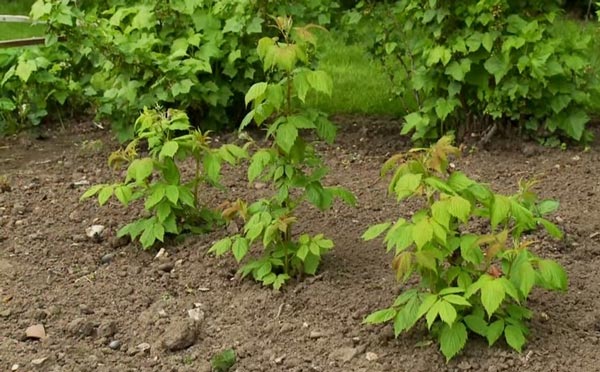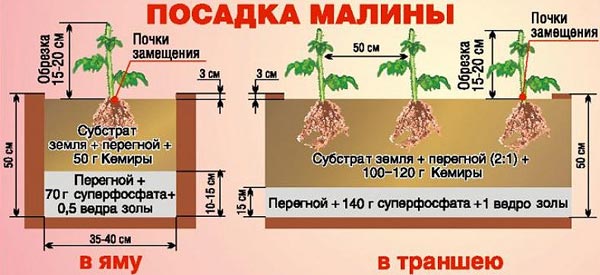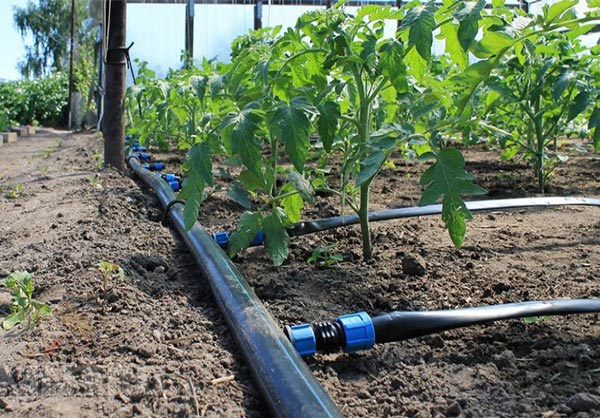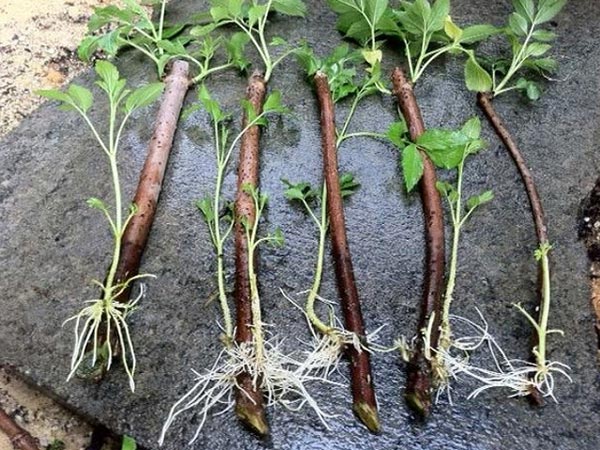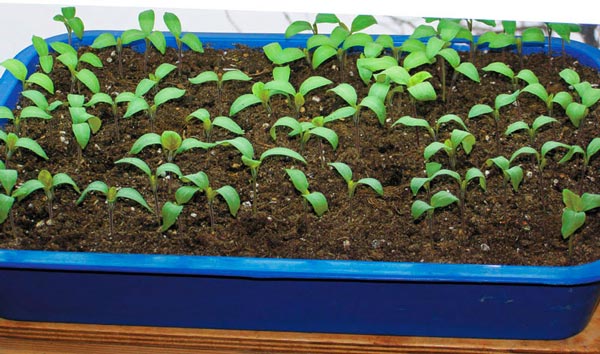How to plant and grow raspberries for a good harvest
Content
Landing features
Anyone who has planted shrubs at least once on a plot or in a garden can easily cope with planting a raspberry seedling. The crop prefers slightly acidic or neutral soil. According to the advice of seasoned gardeners, shrubs planted in spring or autumn take root best. In the summer, you can root green cuttings of the culture.
If you are not yet very familiar with the peculiarities of the culture, try to choose winter-hardy, productive and unpretentious varieties: the thornless, disease-resistant Tarusa raspberry, the winter-hardy black raspberry Cumberland.
Fans of bright colors choose an exotic rose-leaved Japanese raspberry, you can plant a dwarf remontant Monomakh's Hat - a variety with a high yield.
Video "Growing raspberries"
The video tells about the rules for growing raspberries.
Site selection and soil preparation
For landing, you should choose a place with good lighting and protected from strong winds. Planting raspberries along the walls of outbuildings or fences on the south side would be ideal. It is important that the snow cover lingers longer in the selected area in winter.
Avoid raspberry bush with annual crops like potatoes and tomatoes, which are prone to the same diseases. But growing a raspberry next to an apple tree, on the contrary, has a beneficial effect on both crops: the apple tree protects the shrub from gray rot, and the raspberry tree protects the apple tree from fungal infections.
Before planting a raspberry seedling, keep in mind that it will grow in the chosen place for about 10-15 years. The culture loves fertile, light soils. If the soil in your garden is sandy or peaty, consider composting it annually. And in heavy clay soil, the culture grows poorly - its root system quickly decays.
The site chosen for planting should be carefully dug up in advance and well fertilized with organic matter and mineral fertilizers - humus, ammonium nitrate, superphosphates, potassium salt. If the option for spring planting is chosen, this is done in the fall, for autumn planting - at least 1 month in advance.
Planting methods
There are many opinions on how to properly plant and grow raspberries. Experienced gardeners agree that the autumn season is preferable, when the soil is saturated with moisture, the temperature regime that is optimal for the culture prevails. In addition, bushes rooted during the winter grow more actively in the spring. The main thing is to have time to plant raspberries about a month before frost.
Several planting methods are known.
The most common is trench. In this case, it becomes much easier to care for the bushes after planting. The planting trench is located strictly from north to south - this way the lighting of the raspberry tree will be most favorable. Its length can be any, but the depth and width are strictly regulated: not smaller than 60 cm, and not already 50 cm.If you are planning more than one row, retreat about 1.5 m.
At the bottom of the prepared trench, a drainage layer is poured - sand or gravel, and the soil is mixed with humus and mineral fertilizers.The edges of the trench are reinforced with bumpers so that they do not crumble, and T-shaped supports are installed at the ends to pull two rows of wire at a height of about 40 cm from the ground. We plant the bushes in one line, retreating from each other about 1 m. The seedlings are thoroughly watered, the planting site is mulched. In the future, we will tie up growing plants to the wire.
If you have few bushes, the pit planting method is more suitable. The soil for the raspberry tree is prepared in the same way as for the previous method. The holes are formed with a size of 40 × 40 cm, a depth of at least 30 cm.The distance to the next seedling must be observed within 1 m.
The root system of the seedling should be cleaned of damaged roots, spread the roots in the hole and covered with earth, compacting it around the plant. Now you can water the raspberries. This is done in several stages until the earth is completely saturated with moisture.
Follow-up care of the raspberry tree
The need to care for planted raspberry bushes is determined by the chosen planting method, as well as the varietal affiliation of your crop. So, tree varieties, for example Skazka, need the first formative pruning already 2 weeks after planting, while the cut shoots can be used for propagation by cuttings.
Will be grateful for regular pruning and fruitful Tatiana and Patricia. The remontant variety Polka is recommended to be cut "to zero" for the winter, the fruitful Gusar, Polana and Karamelka need frequent and abundant watering. In general, the recommendations for caring for raspberry bushes are the same.
Watering
Raspberries require increased watering during active vegetation - in spring and summer, when fruits are formed and ripen. The bushes should be watered at least 2 times a month, at the rate of 25 liters of water per 1 sq. m landings. The last watering should be done no later than October.
Fertilizers
After each watering, the raspberry bed should be loosened thoroughly - this will remove the emerging weeds and improve the air flow to the plant root system. As for dressings, they should be applied 2-3 times during the season. Most often, organic fertilizers are used - bird droppings or mullein.
Garter
Raspberries form long whips, so they need a garter. Trellis or stretched wire are used as supports. For bush planting, you can use the fan-shaped garter method: we place several supports next to the bush, and attach the shoots to them as they grow.
Subtleties of reproduction
Most often, raspberries are propagated by root cuttings, green cuttings, dividing a bush or seeds. In the first case, the gardener chooses the most powerful and healthy shoots, carefully digs them up and plants them as an independent bush. If there are many layers, and it is difficult to separate them from the mother plant, you can use the method of dividing the bush, having previously carried out sanitary pruning.
Cutting involves pruning young green shoots and then rooting them before planting.
The most time consuming method of growing plants from seeds is to collect them yourself, dry and germinate in indoor pots.
Growing basics
From seed
Growing from seeds at home involves the mandatory stratification of the seed - the seeds must be hardened. To do this, they are wrapped in a damp cloth and placed in the refrigerator for at least 2 weeks. Only then can they be planted in separate pots. This is best done in March, with the onset of heat, seed pots can be placed on a glazed loggia, balcony or veranda. Every 9-10 days the seedlings should be fed with a urea solution. When shoots appear, they are kept in pots until the onset of heat, and only then are they transferred to a permanent bed.
In the greenhouse
Growing in a greenhouse allows you to harvest your favorite berries almost all year round if the room is heated, or to extend the fruiting period as much as possible if there is no heating system.For greenhouse cultivation, a trench planting method is used, the lashes are tied to trellises. Water and feed the raspberry beds every 2 weeks.
According to the Sobolev method
Some summer residents practice the Sobolev method - it is believed that this method of planting significantly increases the yield of the bushes. The secret lies in the fact that the seedling bed should be about 20 cm above the soil level, and trellises are installed along the row of plantings.
The method involves regular careful pruning of raspberries, removal of root shoots. We remember that the culture is actively propagating, forming shoots from the root system. If you want to try this method in action, you can plant 1-2 bushes, forming mini-beds in tires.
Despite the variety of varieties and care methods, it is not difficult to get a good harvest of berries, the main thing is to follow the basic rules of agricultural technology and do everything on time.

